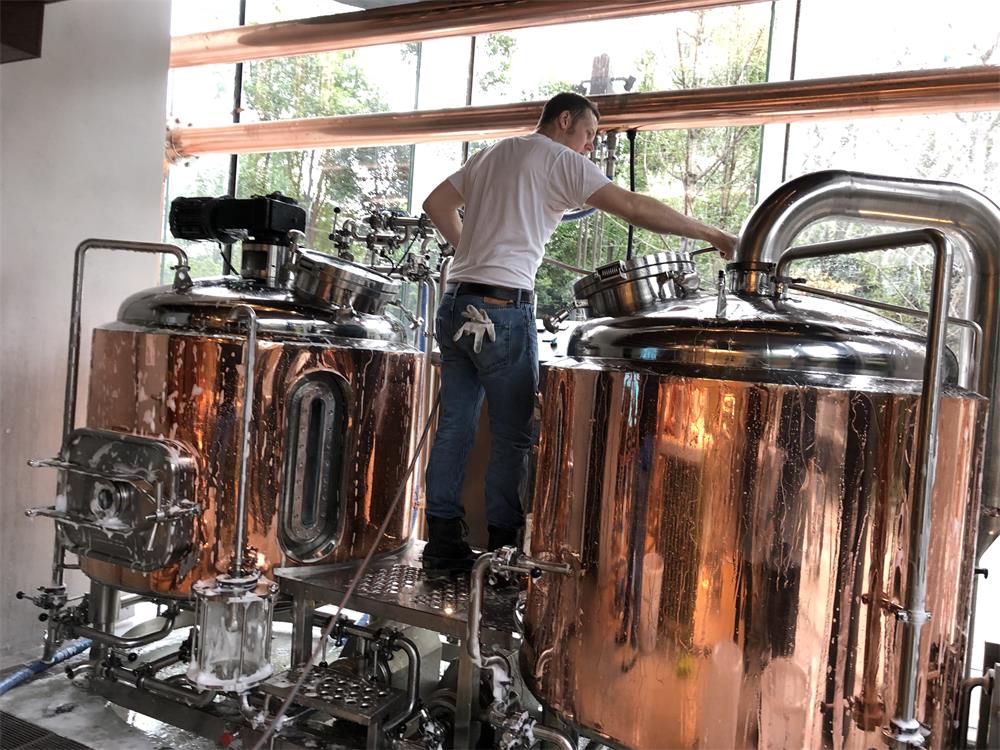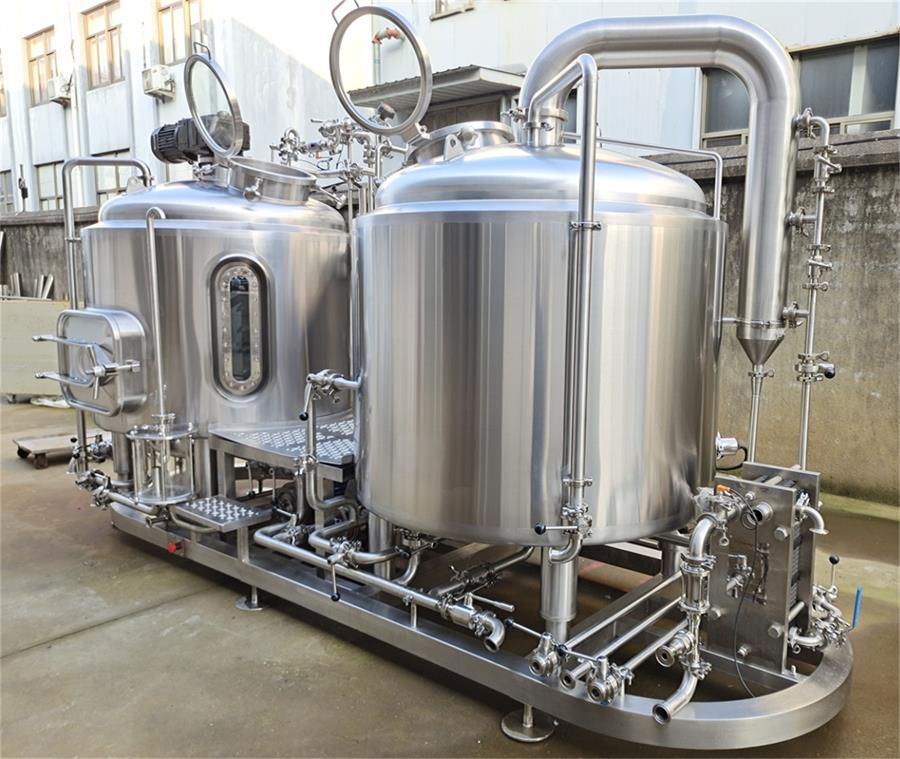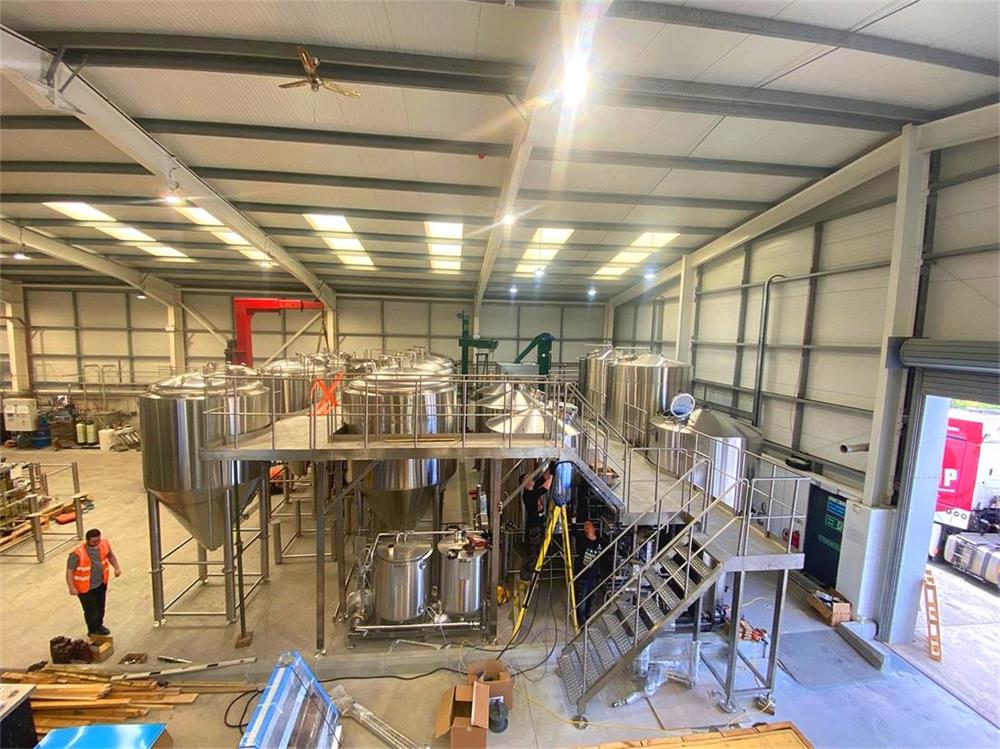Storage Tanks: The Comprehensive Guide
Storage tanks play a crucial role in a multitude of industries, from manufacturing and food production to water treatment and petrochemicals. They come in various shapes, sizes, and materials, each suited for specific purposes. In this comprehensive guide, we delve deep into the world of storage tanks, providing an overview, detailed equipment guide, and essential information for choosing the right storage solution for your needs.
Overview of Storage Tanks
Storage tanks are essential for storing liquids, gases, and sometimes solids. They ensure the safe and efficient containment of these substances, preventing contamination and facilitating easy access when needed. Whether you’re dealing with water, chemicals, or oil, there’s a storage tank designed to meet your requirements.
Types of Storage Tanks
The types of storage tanks vary based on their application, material, and design. Here’s a detailed breakdown of the different types of storage tanks:
Types of Storage Tanks
| Tank Type | Description | Common Uses |
|---|---|---|
| Above Ground Tanks | Easy to install and maintain, these tanks are accessible and visible, making inspection and maintenance straightforward. | Water storage, fuel storage, chemical storage |
| Underground Tanks | Ideal for saving space and providing additional security from environmental elements and tampering. | Wastewater treatment, fuel storage, chemical storage |
| Vertical Tanks | Space-efficient tanks that maximize storage capacity while occupying minimal ground space. | Water storage, fire protection, bulk storage |
| Horizontal Tanks | Typically used for storage solutions that require easy access and handling, these tanks are often used for transportation as well. | Fuel storage, chemical storage, food processing |
| Steel Tanks | Known for their strength and durability, steel tanks are resistant to extreme temperatures and environmental conditions. | Oil and gas storage, water storage, chemical storage |
| Plastic Tanks | Lightweight and resistant to corrosion, these tanks are cost-effective and versatile. | Water storage, food processing, agricultural use |
| Fiberglass Tanks | Non-corrosive and lightweight, these tanks are ideal for environments where metal tanks would degrade quickly. | Chemical storage, wastewater treatment, food processing |
| Concrete Tanks | Extremely durable and long-lasting, concrete tanks are suitable for large-scale, permanent installations. | Water storage, wastewater treatment, industrial use |

Present Equipment Guide
When selecting storage tanks, it’s important to consider various factors such as capacity, space requirements, and material compatibility. Here’s a guide to help you navigate through the options:
Equipment Guide for Storage Tanks
- Capacity: Determine the volume of storage needed. Tanks come in capacities ranging from a few gallons to several million gallons.
- Material: Choose the material based on the substance being stored. Consider corrosion resistance, chemical compatibility, and durability.
- Design: Decide between vertical or horizontal tanks based on space constraints and ease of access.
- Customization: Many manufacturers offer custom-built tanks to meet specific needs, including additional fittings, coatings, and reinforcements.
Storage Tanks Capacity, Spaces, Design, Layout, Customization
| Factor | Details |
|---|---|
| Capacity | Varies from small (50-100 gallons) to large (1 million+ gallons). |
| Spaces | Above ground, underground, indoor, outdoor; consider space availability and environmental factors. |
| Design | Vertical, horizontal, rectangular, cylindrical; chosen based on storage needs and space optimization. |
| Layout | Should facilitate easy access, maintenance, and safety compliance. |
| Customization | Additional features like heating elements, insulation, mixing systems, and specialized coatings available. |
Suppliers and Price Range
Selecting a supplier involves considering factors like reputation, product range, and cost. Here’s an overview of potential suppliers and the price range for various types of storage tanks:
Suppliers and Price Range for Storage Tanks
| Supplier | Price Range | Notes |
|---|---|---|
| Tank Depot | $500 – $20,000 | Offers a wide range of plastic and steel tanks for various applications. |
| CST Industries | $1,000 – $100,000+ | Specializes in custom-built tanks, including bolted and welded steel tanks. |
| Containment Solutions | $2,000 – $50,000+ | Known for their fiberglass and polyethylene tanks, suitable for chemical and wastewater. |
| Norwesco | $300 – $15,000 | Offers an extensive selection of plastic tanks for agricultural and industrial use. |
| Highland Tank | $5,000 – $200,000+ | Provides steel and concrete tanks, focusing on high-capacity and industrial applications. |
Installation, Operation, Maintenance
Proper installation, operation, and maintenance are critical to the longevity and functionality of storage tanks. Here’s a detailed guide:
Installation, Operation, and Maintenance of Storage Tanks
| Aspect | Details |
|---|---|
| Installation | Ensure a stable, level base; follow manufacturer guidelines; consider environmental regulations and safety protocols. |
| Operation | Regularly monitor tank levels, temperature, and pressure; use appropriate control systems and safety valves. |
| Maintenance | Conduct routine inspections for leaks, corrosion, and structural integrity; clean tanks periodically to prevent buildup. |
Choosing the Right Supplier
Choosing the right supplier is a crucial step in acquiring a suitable storage tank. Consider these factors to make an informed decision:
How to Choose the Right Supplier for Storage Tanks
| Factor | Details |
|---|---|
| Reputation | Research customer reviews, industry reputation, and track record. |
| Product Range | Ensure the supplier offers a variety of tanks that meet your specific needs. |
| Customization | Check if the supplier provides custom-built tanks and additional features. |
| Support | Look for suppliers that offer comprehensive support, including installation and maintenance services. |
| Cost | Compare prices from different suppliers, considering the balance between cost and quality. |
Pros and Cons of Storage Tanks
Understanding the advantages and limitations of different storage tank options can help in making an informed decision. Here’s a comparison:
Advantages and Limitations of Storage Tanks
| Tank Type | Advantages | Limitations |
|---|---|---|
| Above Ground Tanks | Easy access for inspection and maintenance; cost-effective installation. | Vulnerable to environmental conditions; requires space. |
| Underground Tanks | Saves space; protected from environmental elements and tampering. | Higher installation and maintenance costs; difficult to inspect. |
| Steel Tanks | High strength and durability; resistant to extreme temperatures. | Susceptible to corrosion without proper coatings; heavy and expensive. |
| Plastic Tanks | Lightweight, corrosion-resistant, cost-effective. | Less durable than steel; limited temperature tolerance. |
| Fiberglass Tanks | Non-corrosive, lightweight, long-lasting. | Higher upfront cost; can be brittle under certain conditions. |
| Concrete Tanks | Extremely durable, ideal for large-scale applications. | Heavy, expensive, and difficult to install; prone to cracking over time. |
Brewing Process with Storage Tanks
The brewing process relies heavily on storage tanks for various stages, from ingredient storage to fermentation and aging. Here’s a detailed look at how storage tanks are utilized in brewing:
Brewing Process Utilizing Storage Tanks
- Ingredient Storage: Ingredients like water, malt, and hops are stored in dedicated tanks to maintain freshness and quality.
- Mashing: The malt is mixed with hot water in a mash tun (a type of storage tank) to convert starches into sugars.
- Boiling: The wort (liquid extracted from the mashing process) is boiled in a large tank called a brew kettle.
- Fermentation: The boiled wort is transferred to fermentation tanks, where yeast is added to convert sugars into alcohol.
- Aging: After fermentation, the beer is aged in storage tanks to develop its flavors.
- Packaging: Finally, the beer is transferred to packaging tanks before being bottled or canned for distribution.

FAQ
Let’s address some common questions about storage tanks:
| Question | Answer |
|---|---|
| What are storage tanks used for? | Storage tanks are used for storing liquids, gases, and sometimes solids across various industries. |
| How do I choose the right storage tank? | Consider factors like capacity, material compatibility, space, and specific application needs. |
| How often should storage tanks be inspected? | Regular inspections should be conducted at least annually, with more frequent checks for critical uses. |
| What materials are storage tanks made from? | Common materials include steel, plastic, fiberglass, and concrete, each suited for different applications. |
| Can storage tanks be customized? | Yes, many suppliers offer custom-built tanks with additional features and specifications. |
Additional FAQs About Storage Tanks (5)
1) How do I determine the right material for a chemical storage tank?
- Start with a chemical compatibility chart and SDS. Consider concentration, temperature, and expected UV exposure. For acids/alkalis, FRP or HDPE/XLPE are common; for hydrocarbons, lined carbon steel or stainless steel. Verify permeation rates and required linings per API 650/652 or UL 142/1746 where applicable.
2) What are typical design codes and standards for storage tanks?
- Aboveground welded steel: API 650 (new construction), API 653 (inspection/repair). Pressure-rated: ASME Section VIII. Small shop-fabricated: UL 142. Underground: UL 58/1746, STI-P3. Fire protection water: NFPA 22. Secondary containment per EPA SPCC (40 CFR Part 112) in the U.S.
3) Do I need secondary containment for aboveground storage tanks?
- If you store oil or hazardous substances above EPA thresholds, yes. Containment volume generally must be ≥ the largest tank volume plus rainfall allowance (jurisdiction-specific). Options: dikes, double-walled tanks, or remote containment basins.
4) How often should internal inspections be done for steel storage tanks?
- External visual: monthly/quarterly per site policy. Formal external API 653: typically every 5 years. Internal inspections: 10 years baseline or based on risk-based inspection (RBI) intervals using corrosion rates, service, and NDT data. Cathodic protection and coatings can extend intervals with RBI justification.
5) What sensors and instrumentation are recommended for modern storage tanks?
- Overfill prevention (high-high level switch), continuous level (radar), temperature, pressure/vacuum relief with flame arrestors (where applicable), leak detection for double walls/USTs, and corrosion monitoring (ER probes/CP rectifier readouts). Add IIoT gateways for remote alarms and inventory.
2025 Industry Trends for Storage Tanks
- Digitization accelerates: radar level + cloud inventory platforms reduce manual gauging and shrink stock-outs.
- Sustainability drives material choices: more demand for recycled-content HDPE tanks and low-VOC linings; energy-saving insulation on hot/cold tanks.
- Regulatory tightening: increased enforcement of SPCC/UST leak detection and PFAS containment/compatibility requirements.
- Modular, bolted steel tanks gain share for rapid deployment and easier expansion, especially in water/wastewater.
- Predictive maintenance expands via corrosion monitoring, CP remote telemetry, and RBI programs to reduce unplanned outages.
2023–2025 Snapshot: Adoption, Compliance, and Sustainability Metrics
| Metric | 2023 | 2024 | 2025 (proj.) | Notes/Source |
|---|---|---|---|---|
| Sites using radar level + remote telemetry on ASTs | 34% | 41% | 50% | Industry telemetry vendors; water/chem reports |
| Facilities with formal RBI programs for tanks | 22% | 28% | 35% | API/inspection service provider surveys |
| Share of new municipal tanks that are bolted steel | 38% | 42% | 46% | OEM bid data (water/wastewater) |
| USTs with continuous interstitial monitoring | 67% | 72% | 77% | EPA UST compliance summaries |
| Use of recycled-content polymer tanks in water/food | 9% | 12% | 16% | Poly tank manufacturer disclosures |
| Reported spill incidents per 100 facilities (AST) | 5.4 | 4.8 | 4.3 | Aggregated environmental incident reports |
Authoritative references:
- API 650/653 and RBI guidance: https://www.api.org
- U.S. EPA SPCC and UST programs: https://www.epa.gov/oil-spills-prevention-and-preparedness-regulations and https://www.epa.gov/ust
- NFPA 22 (water tanks for fire protection): https://www.nfpa.org
- Steel Tank Institute/UL standards: https://www.steeltank.com and https://ul.com
Latest Research Cases
Case Study 1: Implementing RBI to Extend Inspection Intervals for API 650 Tanks (2025)
Background: A specialty chemicals plant operating eight aboveground steel storage tanks faced costly downtime for 10-year internal inspections.
Solution: Deployed an API 580/581 risk-based inspection program using ultrasonic thickness (UT) grids, corrosion coupons, and CP monitoring; added fixed radar level and temperature sensors with cloud alerting.
Results: Internal inspection intervals extended from 10 to 14 years for low-risk service tanks; estimated annualized savings of $180k from reduced outages; no increase in leak incidents across 18 months of monitoring.
Case Study 2: Switching from Single-Wall Poly to Double-Wall XLPE for Acids (2024)
Background: A food processing facility storing 50% NaOH and 37% HCl experienced frequent secondary containment cleanups.
Solution: Installed double-wall XLPE storage tanks with integral leak detection, upgraded venting and scrubber tie-ins, and added overfill prevention switches.
Results: Zero containment events over 12 months; operator exposure events dropped to nil; maintenance hours for cleanup reduced by 85%; CAPEX payback achieved in 22 months.
Expert Opinions
- Neeraj Nandurdikar, Managing Director, Asset Management, Accenture Industry X
“Risk-based inspection coupled with real-time corrosion and level data is redefining tank integrity programs—moving from calendar-based to condition-based plans.” - Janet K. Dugan, PE, Tank Integrity Engineer, Independent Consultant
“For steel storage tanks, coating quality and cathodic protection do more to extend life than plate thickness alone. Specify linings per service chemistry and rigorously holiday-test.” - Dr. Andrea Dietrich, Professor of Civil & Environmental Engineering, Virginia Tech
“In water storage, material selection and mixing systems significantly influence residual disinfectant stability and taste—design for turnover, not just capacity.”
Practical Tools and Resources
- API Standards (650, 653, 620, 580/581 RBI): https://www.api.org
- EPA SPCC Plan templates and guidance: https://www.epa.gov/oil-spills-prevention-and-preparedness-regulations
- EPA UST Compliance resources: https://www.epa.gov/ust
- Steel Tank Institute (R122, SP001 inspection, STI-P3): https://www.steeltank.com
- NFPA 22 (fire water tanks) and NFPA 30 (flammable/combustible liquids): https://www.nfpa.org
- Chemical compatibility databases: Cole-Parmer and manufacturers’ charts (e.g., https://www.coleparmer.com/chemical-resistance)
- IIoT inventory/telemetry providers (examples): Endress+Hauser Netilion, VEGA Inventory, Emerson Remote Ops
- Corrosion/CP resources: NACE/AMPP materials and training: https://www.ampp.org
Last updated: 2025-09-29
Changelog: Added 5 targeted FAQs; introduced 2025 trends with data table and cited standards; included two recent case studies; provided expert opinions; compiled practical tools/resources with authoritative links
Next review date & triggers: 2026-03-31 or earlier if API/NFPA standards update, EPA issues new SPCC/UST rules, or significant materials/lining advances affect tank selection and maintenance
Share this entry
Interested in learning more about Brewing Systems including additional details and pricing information? Please use the form below to contact us!
YOLONG BREWERY EQUIPMENT FAQS
- Commercial Brewery / Craft Brewery / Microbrewery / Nanobrewery
- What is The Difference Between Craft Beer and Industrial Beer?
- The Bespoke Differences In Custom Brewing Systems
- Everything You Need to Know About Kettle Souring
- How to Choose Brewing Equipment for Your business?
- How To Choose The-Best Partner To Build Your Commercial Microbrewing System?
- Two Detection Sensors That You Need To Use In Your Brewhouse System
- Remote Control Applications in Brewing Equipment/How does it work?
- How To Clean Your Brand New Brewery Tanks?

